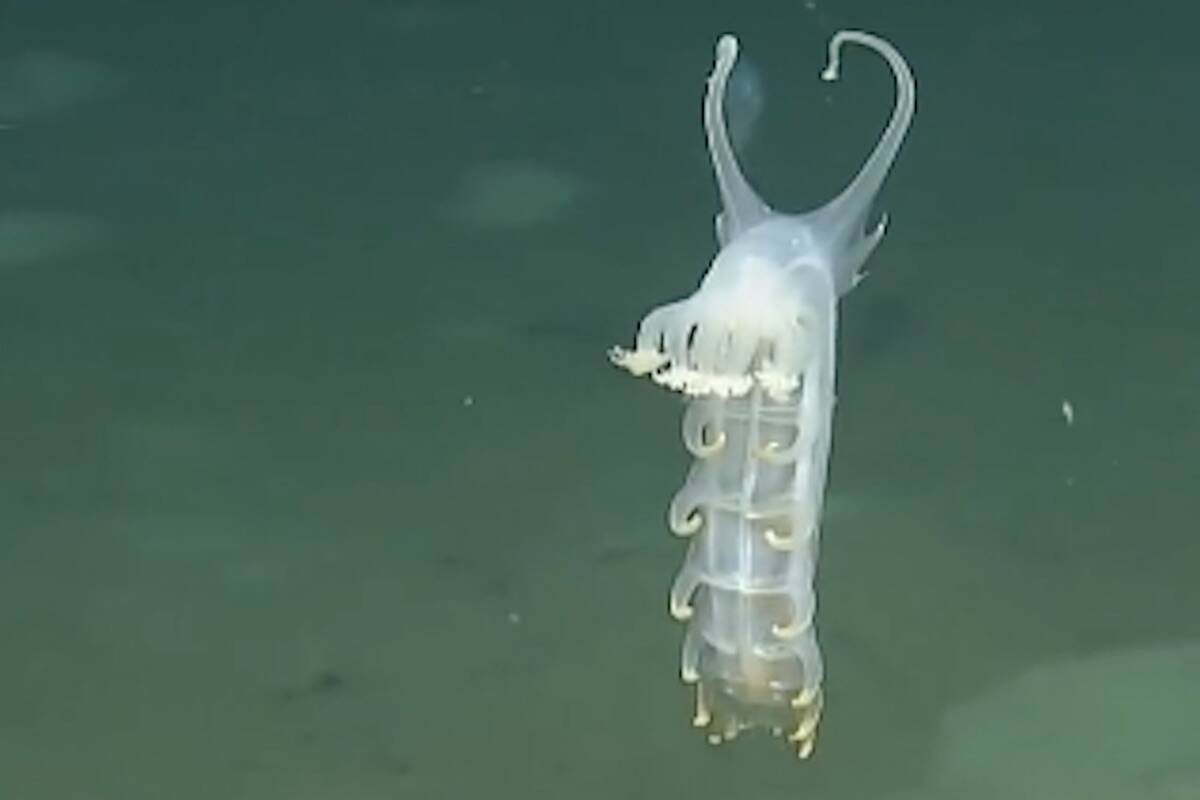More than two-and-a-half kilometres below the ocean’s surface off of Vancouver Island, Ocean Networks Canada captured a rare sighting last summer.
The Nautilus exploration vessel video-captured images of a sea pig swimming along at a depth of 2,584 metres in the Cascadia Basin last August. It’s rare to actually witness sea pigs – alternatively known by their scientific name of scotoplanes – as they swim, Ocean Networks Canada (ONC) said.
The marine animals, which are related to starfish and sea urchins, are usually found scavenging the ocean floor for waste morsels to feed on.
“These sea cucumbers ‘walk’ on their inflatable tube feet, scavenging for tasty #deepsea detritus,” Ocean Networks Canada tweeted Wednesday.
That sea-bottom ‘walk’ is facilitated by hydraulically operated tube feet. Sea pigs then feed by using a ring of feeding tentacles surrounding their mouths to sift through the mud and grab food.
The deep-sea swine-resembling creatures are about half the length of a ruler and scientists believe their papillae (small lump-like tissue) may allow sea pigs to “smell” their way to food, Ocean Networks Canada said.
“Pigs can fly!” the Greater Victoria-based ONC said in its tweet.
Pigs can fly! Rare sighting of a swimming #seapig (Scotoplanes sp) at Cascadia Basin, 2584 metres. Usually seen on the seafloor, these sea cucumbers 'walk' on their inflatable tube feet, scavenging for tasty #deepsea detritus. Watch more: https://t.co/Tb3mi7CgIS #knowtheocean pic.twitter.com/M4892uVdeR
— Ocean Networks 🇨🇦 (@Ocean_Networks) February 23, 2022
READ: Officials: More than 80 starving manatees in rehab across U.S.
Do you have a story tip? Email: vnc.editorial@blackpress.ca.
Follow us on Twitter and Instagram, and like us on Facebook.

